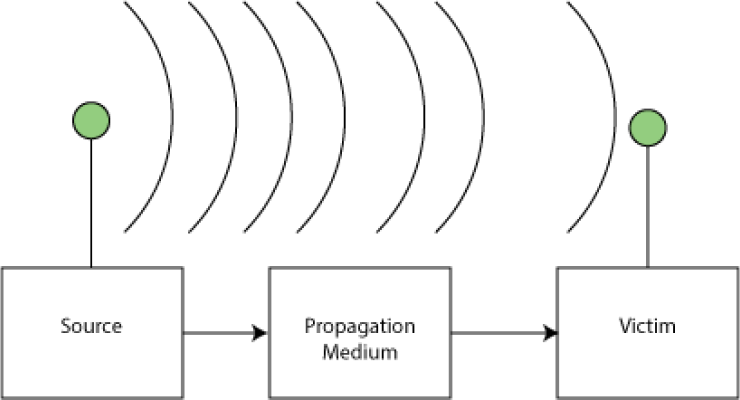- GENERIC STANDARD
- SAMPLE DOCUMENTS
Electromagnetic Compatibility (EMC)
Terminology
Electromagnetic Compatibility – EMC – The ability of electrical equipment and systems to function acceptably in their electromagnetic environment, by limiting the unintentional generation, propagation and reception of electromagnetic energy which may cause unwanted effects such as electromagnetic interference (EMI) or even physical damage in operational equipment. The goal of EMC is the correct operation of different equipment in a common electromagnetic environment. It is also the name given to the associated branch of electrical engineering.
Radio Frequency Interference – RFI – The result of unwanted noise due to Radio Frequency energy (mostly in the 15 kHz to 1000 MHz (RF) range).
Electromagnetic Interference – EMI – The most commonly used name for interference that comes from as low as DC and as high 300 GHz, the entire electromagnetic spectrum where both radio and microwaves exist.
EMI
There are generally three components involved in any EMI situation, the source, the propagation medium and the victim.
The electromagnetic source can be a different system, referred to as “inter-system EMI” or it can be from within the same system, known as “intra-system EMI”. In either case, the EMI has an undesirable effect on the receptor circuit, or victim.

Effects of EMI
Depending on the affected systems and the type of EMI, the results of unwanted EMI can range from simple nuisance to disastrous. EMI can cause interference in somewhat benign ways on televisions, ATMs and radios, or in more serious ways on aeronautical communication systems, cardiac pacemakers or other vital electronic and electrical devices.
The main concept behind EMC compliance is that devices should perform as expected within their given environment, without impeding on other devices around them, or sacrificing their own performance due to unwanted EMI.
Causes or Sources of EMI
Some EMI is caused by the unintentional radiator (circuit or device). This can be a side effect of poor signal integrity or signal degradation, fast, high energy transients or pulses. Unintentional sources can include non-linear devices such as semiconductors, conductors or others.
EMI can be caused by intentional radiators as well if the device experiencing interference is not adequately immune to such signals. Common sources are cell phones, wireless networks, and any of the growing number of common wireless devices around us today.
Other sources could include natural phenomenon such as an electrostatic discharge from a touch or lightning strikes nearby.
Difficulty of EMC?
Most people think of EMC as being complex or difficult. Here are some reasons why:
-
 Orders of magnitude change in voltage current or frequency.
Orders of magnitude change in voltage current or frequency. -
 The levels of EMI are expressed in logarithmic units of the power ratio of one physical property to another.
The levels of EMI are expressed in logarithmic units of the power ratio of one physical property to another. -
 Types of circuits that contribute can be analog, digital or power circuits.
Types of circuits that contribute can be analog, digital or power circuits. -
 The effects of stray capacitors or inductors are difficult to assess, and electromagnetic fields themselves are invisible.
The effects of stray capacitors or inductors are difficult to assess, and electromagnetic fields themselves are invisible.